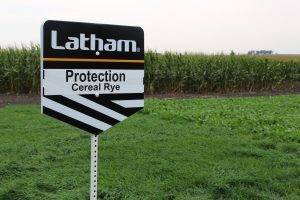Many farmers work hard and put safety measures in place to preserve their family’s farm — their legacy — for future generations. Preserving and building the soil is one of the most important things farmers do for humanity.
It’s more of a marathon, rather than a sprint, to unleash new yield levels. We must unfold the earthly secrets that will help develop new soil health levels. Soil biological development has recently gained massive interest in the United States, so many farmers are experimenting with biological supplements and cover crops.
If you’re interested in getting started with cover crops on your farm, below are a few tips for your consideration:
1. Start small in early fall so the crop has enough time to grow.
I suggest getting an initial solvita soil test. Start super simple by getting one test per majority soil type in the area of cover crop interest. The soil test results will suggest a cover crop that will benefit the soil and following crop the most. In addition, it will help you trend the soil biological activity over the next few years.
2. Keep it very simple at first.
All the options can be overwhelming, so focus on one cover crop in the beginning. The most experienced cover crop farmers say you don’t need to get too fancy with complicated mixes. Some NRCS cooperative payments require certain mixes, so you’ll need to get the requirements from your local NRCS office.
3. Explore seeding options.
Many county NRCS agencies have no-till drills available for rent. There also are programs available to help fund aerial applications. Again, work with the NRCS to explore programs available in your area.
4. Conduct a test to help determine if carryover herbicide could affect cover crop emergence.
Some residual herbicide compounds can still be potent enough to affect cover crop emergence or root growth, as herbicide could be at a deeper level. To test for carryover, conduct a flower pot soil test two weeks prior to seeding cover crops. I gather soil samples from three locations throughout the field. Then I replicate this test for each cover crop I plan to plant.
For example: If I were going to mix tillage radish with winter rye, I would need six soil samples from the field (3 for rye and 3 for radish). You also need to purchase enough basic potting soil for 1 or 2 pots that will be used as a check.
5. Have fun!
Cover crops are a new pathway for many. You’re developing a plan that is relevant and specific to your farming system and soil biology. Your soil is your science lab! Even if you don’t achieve the desired results right away, you’re gaining knowledge that can be used to improve your soils in the future. Remember to involve your local NRCS to help share the investment costs.
FOR MORE INFORMATION, GO TO:
www.nrcs.usda.gov/Internet/FSE_DOCUMENTS/stelprdb1082778.pdf

